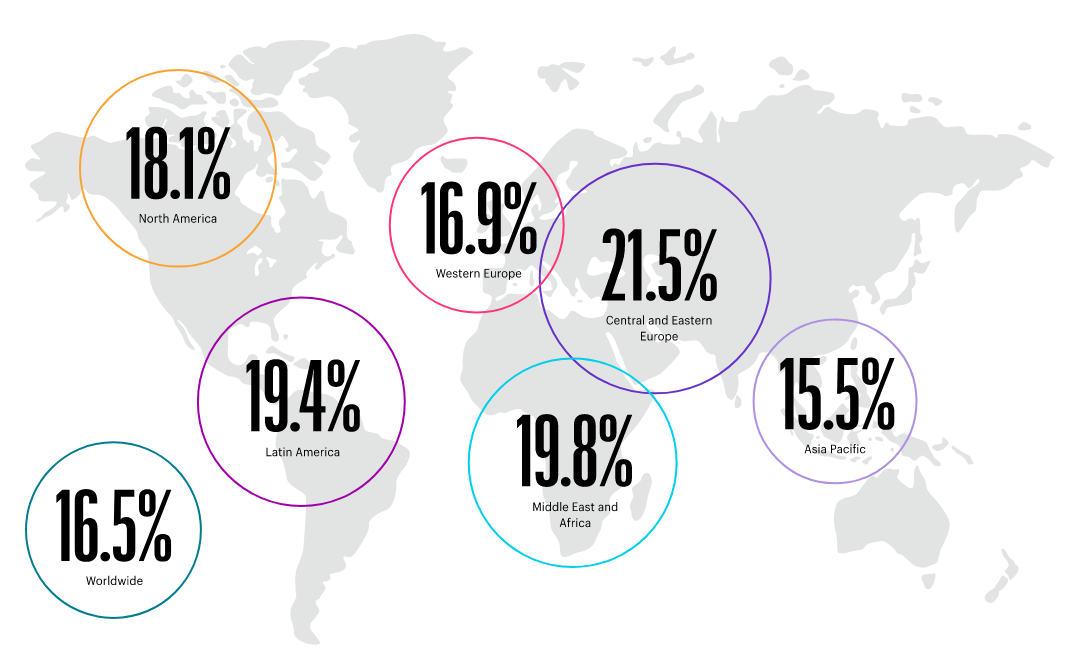And that’s just where the changes begin. Read this new report on the eCommerce trends influencing your retail business.
1. Shoppers worldwide fuel ecommerce supercycle
At the height of the COVID-19 pandemic, 10 years of ecommerce growth happened in just 90 days.
U.S. ecommerce penetration, %
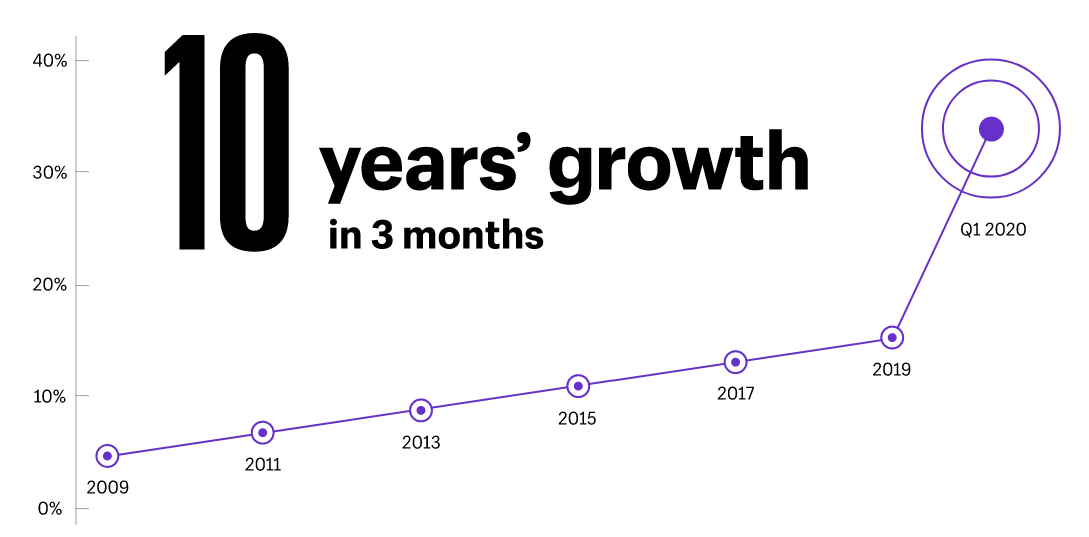
Sourced from McKinsey
As countries locked down and retailers were forced to close, ecommerce reached an all-time high of 16.4% of total global retail sales. It’s not just Gen Z and millennials driving this trend—older shoppers have also moved online. According to a global survey across 11 markets by Shopify, 84% of consumers shopped online during the pandemic.
Retail ecommerce sales growth worldwide, by region, 2020
In 2021 ecommerce growth will be uneven. In the U.S. it’s expected to decelerate to 7.8% as retail brick-and-mortar sales rebound from their pandemic plunge. In Asia Pacific, Europe, and the Middle East, growth will be faster than the U.S. through the first half of the decade.
Retail ecommerce sales compound annual growth rate forecast (CAGR), 2020–2024

Sourced from Statista
While a post-COVID-19 world is expected to recover more slowly than it did after the 2008–2009 global financial crisis, ecommerce is the economic sweet spot as brands and consumers rush online. Nearly 150 million people shopped online for the first time in the pandemic, and the number of ecommerce buyers will only continue to rise.
Ecommerce as a percentage of total global retail sales will also continue to grow over the next five years. This trend is not only a tailwind for digital brands, but also a headwind as the world of ecommerce becomes more crowded and competitive than ever.
2. Ad costs spike due to record online competition
As legacy wholesalers go online and global retail giants like Walmart expand their ecommerce initiatives, digital competition is heating up. Likewise, competitors in product categories not traditionally in-demand online are also competing for ecommerce shoppers. The shift is led by household essentials, health, and personal care.
Change in ecommerce usage to purchase products normally bought in store due to COVID-19 worldwide as of March 15, 2020, by country
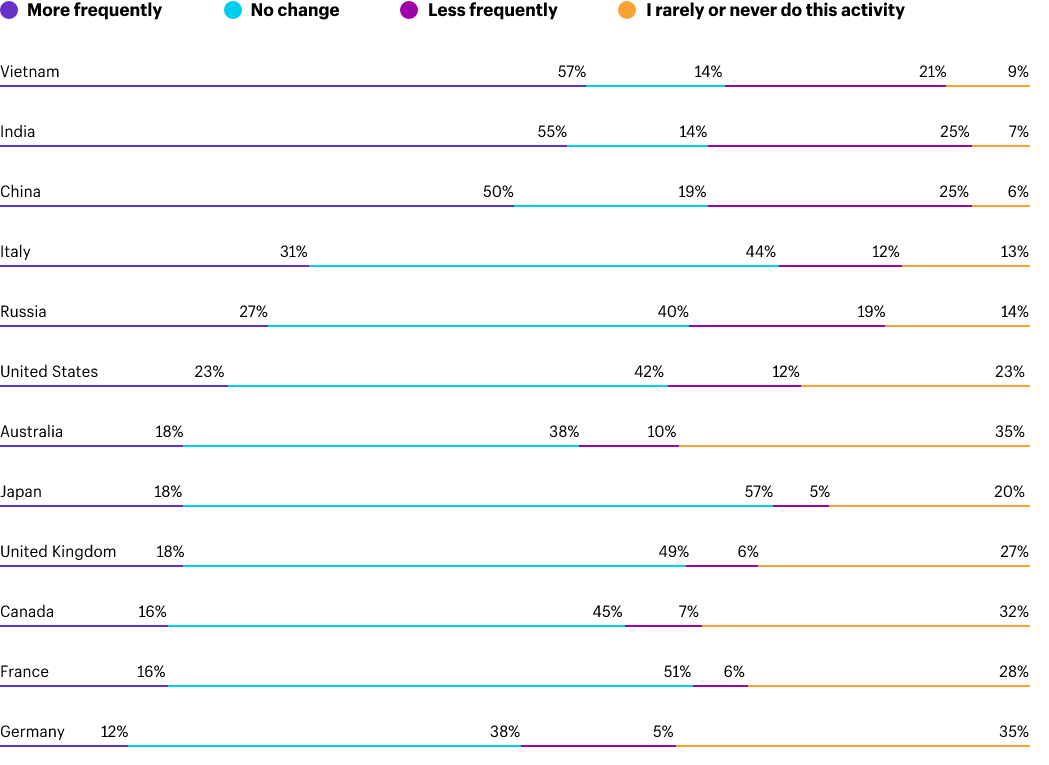
Sourced from Statista
Competition is also coming from abroad. As COVID-19 spread, consumers began shopping outside their home countries. Cross-border ecommerce spiked 21% year over year from January to June 2020, with online sales of luxury goods increasing by 39%. According to proprietary data from Shopify, the U.S. leads cross-border ecommerce. But the pandemic has also accelerated this behavior in China.
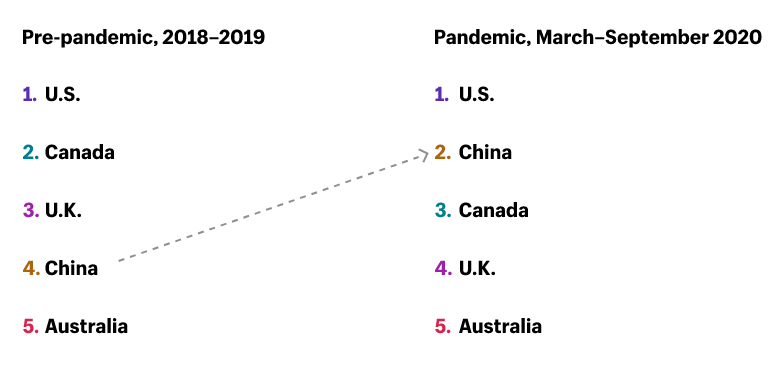
Shopify data reveals that translation apps spiked 3,309% worldwide during the pandemic. Dropshipping and currency conversion apps have also seen significant increased usage since the pandemic. These types of investments in cross-border commerce suggest overseas and regional competition isn’t likely to subside.
With international competition and deep-pocketed retailers prioritizing ecommerce, the shift from television to digital advertising is picking up speed. This has driven up ad costs and made it more expensive to acquire new customers. On Facebook, customer acquisition costs spiked following the pandemic, with costs now higher than pre-pandemic levels.
Cost per click, 2020
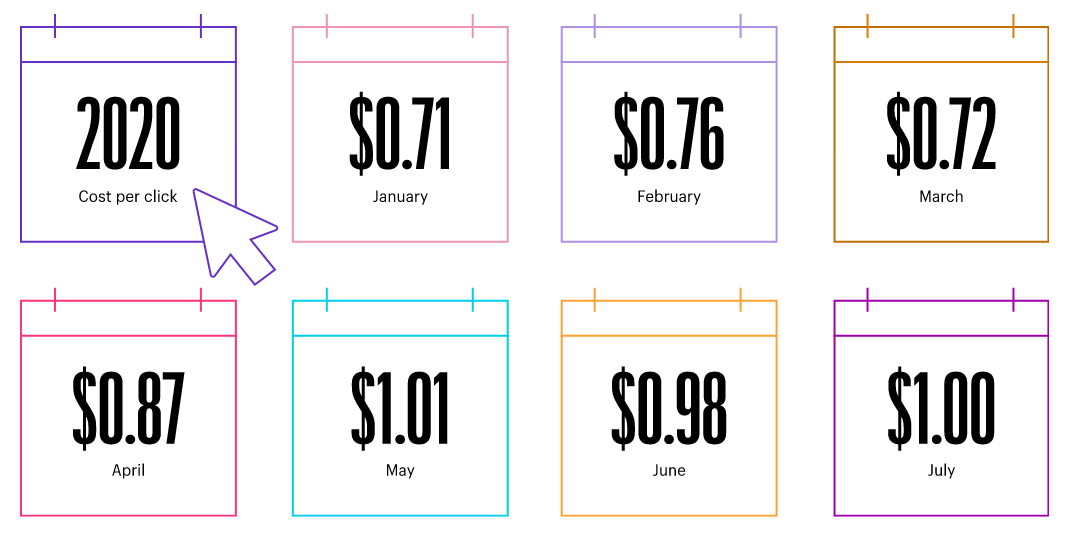
Sourced from Revealbot
Worldwide, branded commerce and marketplace apps can now cost companies more than $30 USD to acquire a new customer.
3. Customer experience becomes an imperative
The global pandemic has transformed the role and importance of digital experiences in customers’ lives. Today’s consumer expects easy-to-use, intuitive digital experiences across channels and devices. Brands that can deliver on those expectations are seeing the greatest returns. According to proprietary data from Shopify, retail merchants with an omnichannel strategy in place replaced 94% of point-of-sale (POS) purchases lost in the first month of the pandemic with online sales.
But a gulf has opened up between digital-first DTC brands and businesses that are new to ecommerce. Only 38% of the largest companies are capable of competing on customer experience.
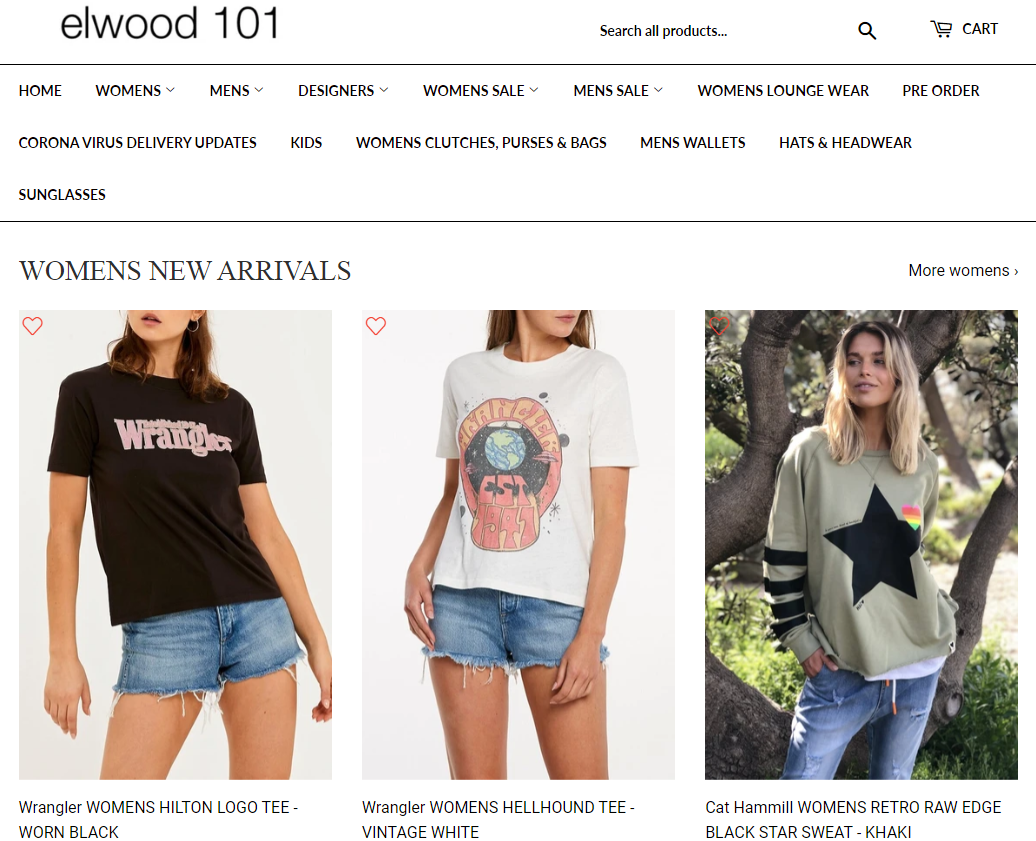
“During the pandemic, direct-to-consumer brands with thriving ecommerce experiences were able to very quickly and easily pivot their marketing and messaging, their energy,” says Hana Abaza, Shopify Plus’ global director of marketing. “They didn’t have to fundamentally rethink their business model. They could focus on very different things because they were at a significant advantage.”
The opportunity for DTC brands is to build on their ecommerce expertise. The challenge for everyone else is keeping up.
4. What you should do in 2021:
Scale your omnichannel strategy
To capitalize on the ecommerce boom and overcome fierce competition, you need to optimize commerce across channels like online marketplaces, social media, retail, and wholesale. That also means building—or buying—a technological foundation that frees your team to create immersive, unified experiences wherever your customers are. The business benefit is resilience, allowing your business to quickly shift efforts and resources from offline to online, and back again, based on customer demand.
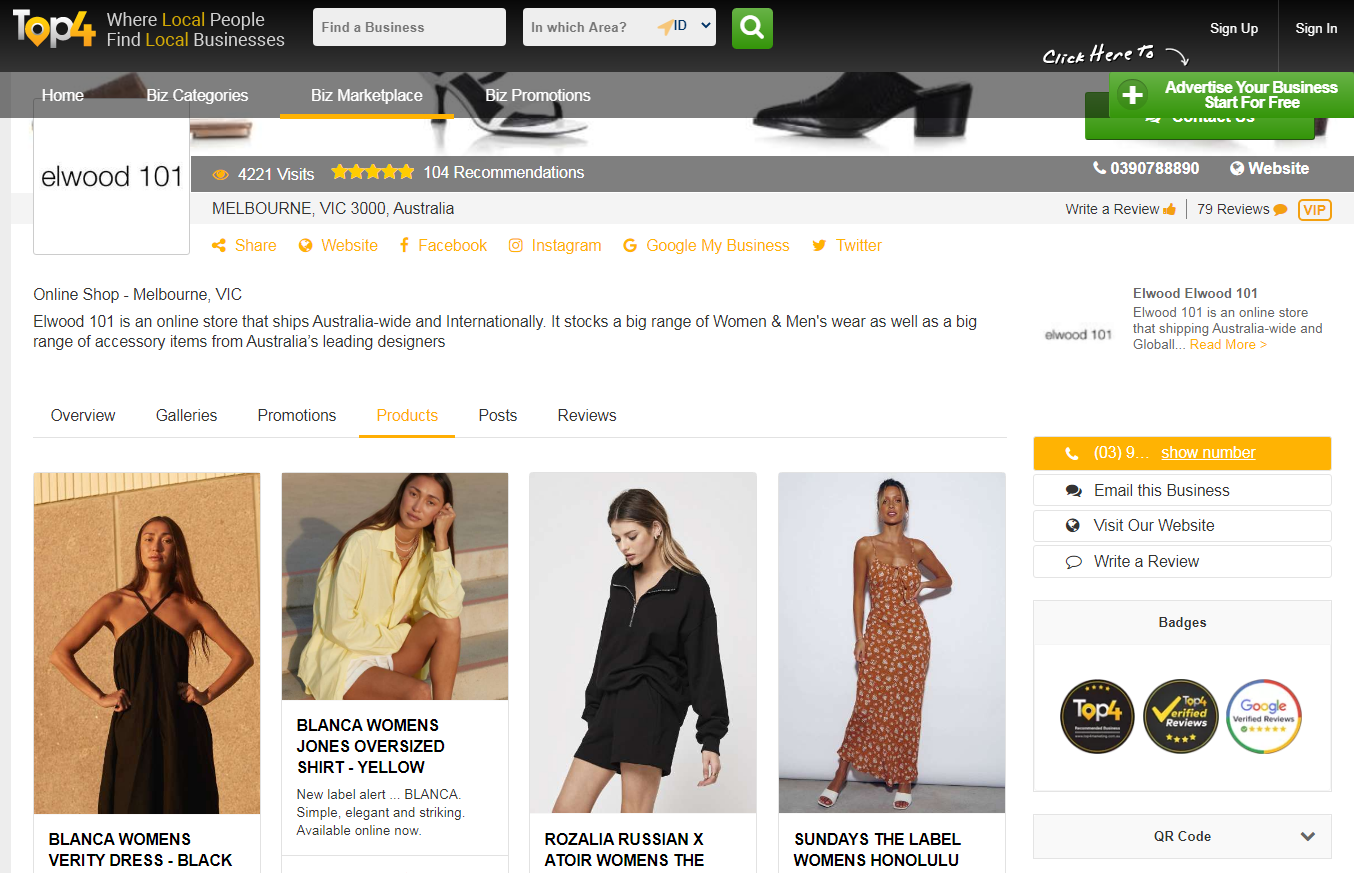
Unify your customer and product data
Having a unified view of your product and customer data is the first step toward providing a consistent experience to customers across channels. Build your business on a single platform that connects workflows and data sources, allows you to manage all your sales channels in one place, and integrates with third-party solutions.
Synchronize product information and inventory
To ensure your brand’s product data and inventory levels are accurate and updated in real time across channels, your platform should automatically sync product information like price, description, and images with SKU counts.

Integrate your sales and supply data
Brands without a single source of truth for sales data and reporting will find it difficult to efficiently track performance across channels. Your commerce platform must integrate with both the sales and supply sides of your business. Use a POS system to connect your digital storefront with retail locations in a central reporting hub.
Prioritize mobile shopping experiences
Competing on customer experience also requires a lightning-fast mobile experience, with 50% of global ecommerce sales happening on mobile devices. Even prior to COVID-19, mobile commerce accounted for 92% of ecommerce growth. Research indicates 53% of consumers will abandon a site that takes longer than three seconds to load on mobile. Worse yet, mobile bounce rates are consistently higher than desktop.
Make your site responsive
Responsive online stores allow your brand to provide consistent experiences across all devices, from desktop to tablet to mobile. They do this by identifying the type of device being used and configuring the website to match the device’s display as closely as possible. Responsive themes also help improve SEO, site speed, and overall user experience.
Convert your site to a progressive web app
Progressive web apps offer an optimal mobile experience across channels and can live on a user’s home screen. They’re designed to load instantly, even if the user is offline.
Combine your progressive web app with an accelerated mobile page
Some brands are also combining progressive web apps with an accelerated mobile page, or a mobile-first, stripped-down HTML copy of a web page that loads instantly. Accelerated mobile pages are the foundation of Google’s mobile-first index, which prioritizes mobile optimization in search results. The combination can lead to better search results, more top-of-funnel traffic, and improved site conversion rates.
Consider a headless architecture
Headless commerce, an API-first solution, decouples the front-end customer experience from the back-end technology infrastructure. Benefits include:
- Integration: Building custom enterprise architecture with APIs enables deep integration with tools or services of choice (like a separate content management system)
- Flexibility: By separating the back end from the front end, you have full ownership and control of the front-end experience and the tech stack used for building it
- Omnichannel: This flexibility allows you to extend shopping into any customer experience, on any device or platform

Despite the cost and development complexity associated with going headless, many merchants are still willing to adopt a headless architecture in an effort to improve conversion rates. Expect the adoption of headless and lean microservice tech stacks to accelerate in 2021.
5. Trend in action: Wild Cactus
Wild Cactus, a young Australian online shopping platform specialised in clothing, skincare, and home essential. , adopted a headless architecture from the start.
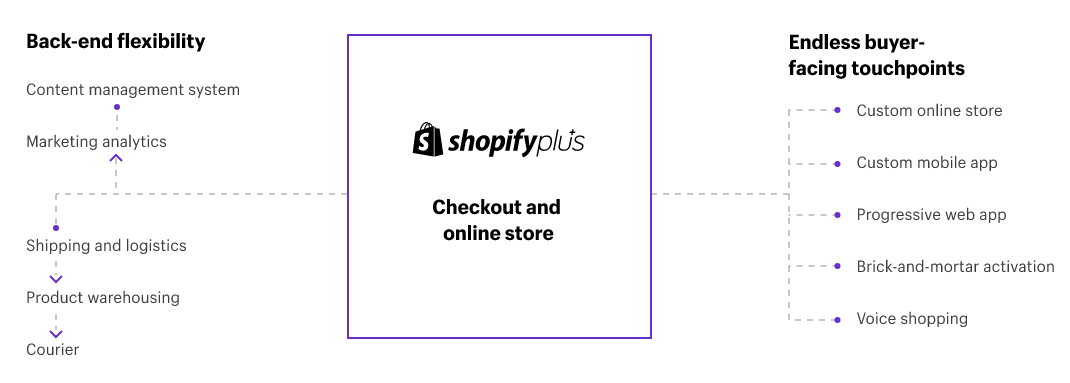
Wild Cactus built a headless progressive web app, which allows it the flexibility to offer the right experience at the right time to different customer segments across any device.

This is the customer-facing portion of its web presence, allowing for new web pages, products, and content to be deployed faster. Although decoupled, the progressive web app integrates with the content management system, shopping cart, and other mission-critical systems.
To find out how we can help you with your Website + Marketing, using our unique location marketing platform called Top4, get in touch today www.top4marketing.com.au
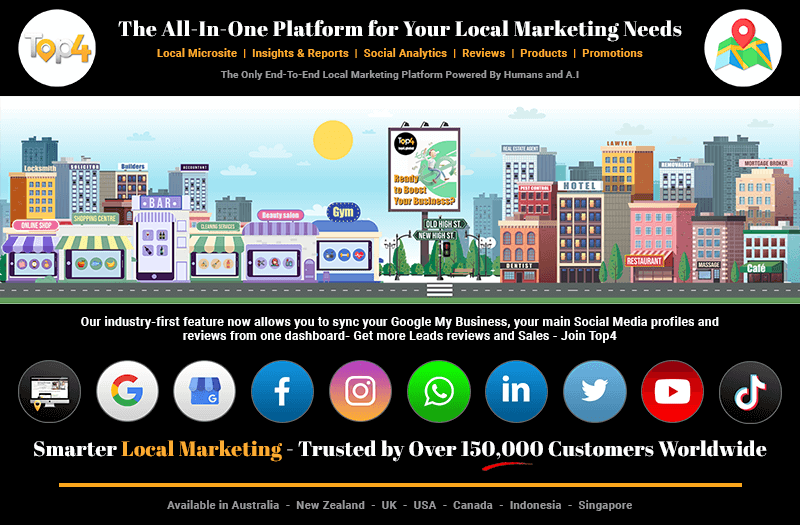
Looking to build customer loyalty through social media? Don’t forget to add your business to Top4.com.au
List your business, create your own digital store to sell goods and services, and share posts on social media. Promote your business on Google instantly! Should you need help with local digital marketing then view our new Google Marketing Platform and services Top4 Marketing
Get Found On Google Promote Your Website, Reach local customers today!
Our Digital Marketing Agency Services Across All Industries Include Search Engine Optimisation (SEO), Google Marketing, Website Design, Corporate Web Development, and local location-based marketing using our own Google Marketing Platform!
Engage A Social Media Agency For Only 1/3 The Cost Of Employing A Social Media Manager…LET’S TALK!
Source: socialmediatoday

